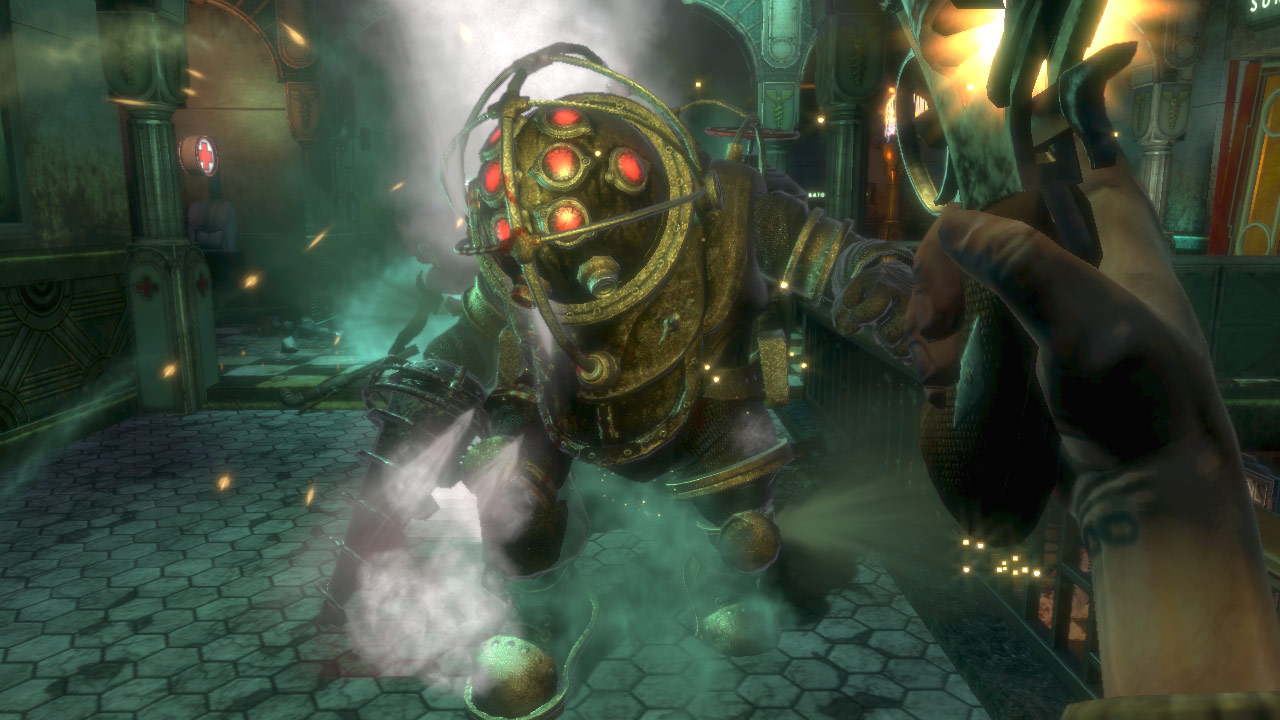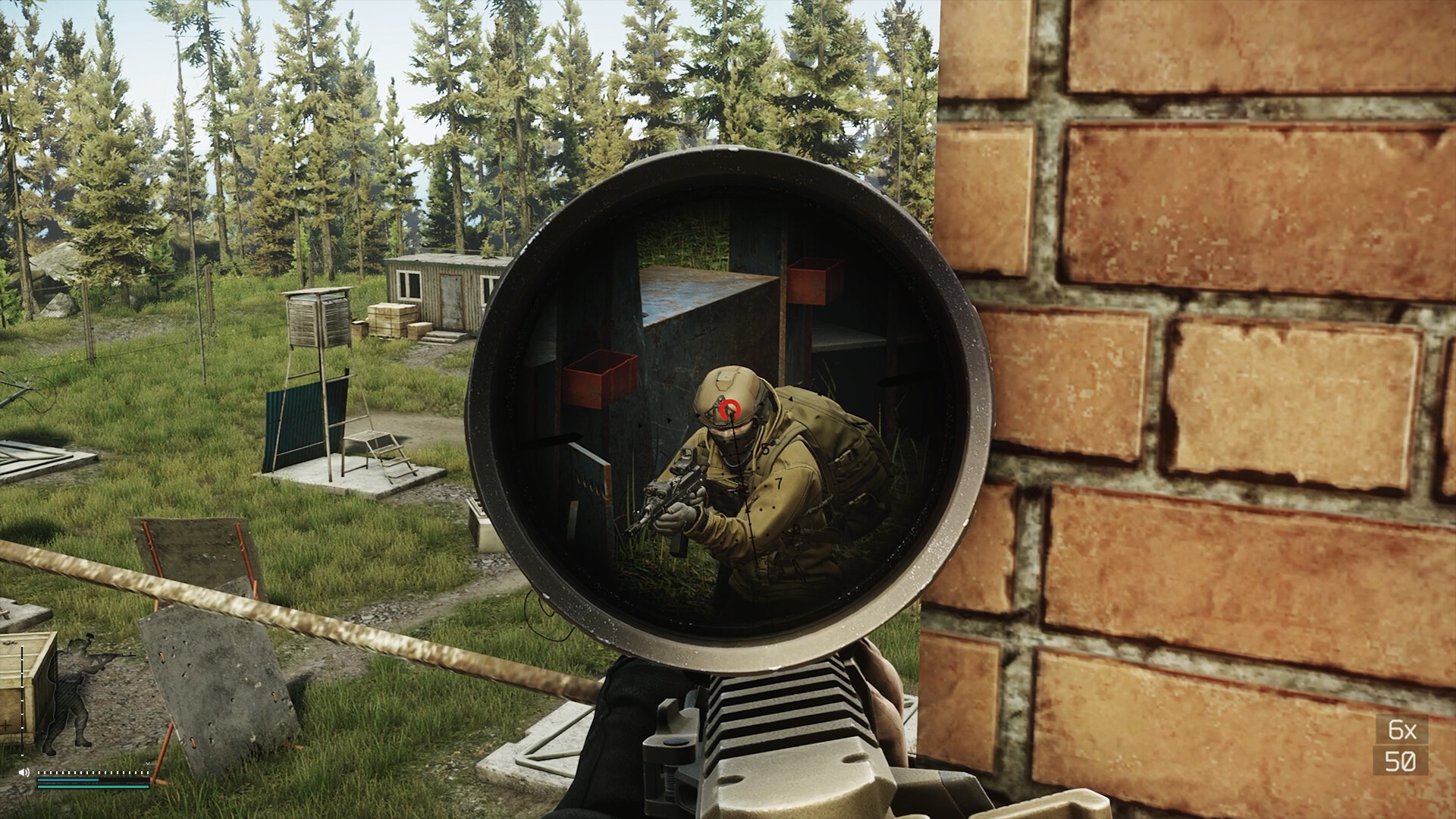
BioShock's Big Daddy is one of gaming's most iconic enemy designs. The drillbit-wielding, diving-helmet wearing protectors of Rapture are synonymous with Irrational's classic shooter, to the point where they were plastered all over the game's box-art when it launched back in 2007.
But it turns out that, like so much else about BioShock, the Big Daddy was directly inspired by System Shock 2. The appearance of BioShock' most dangerous foe derives from the technical limitations of making 3D games back in the 90s.
This was recently revealed by Nate Wells, the latest interviewee in Nightdive's series of in-depth chats about System Shock 2. Wells was art director at Looking Glass Studios when System Shock 2 was being codeveloped with Irrational Games, and now works for Epic. During the chat, Wells reveals that the seeds of the Big Daddy's visual design were sowed when wrangling with polygon counts during the design of System Shock's sequel.
"I work on Fortnite now and we don't talk about polygon counts anymore," he explains to Nightdive Studios' Locke Vincent. "I want to say maybe BioShock was really the last time we talked about polygon counts, right? In a serious way, in a limiting way."
Wells explains that BioShock's Big Daddy comprised between 2,500 and 3,000 polygons, which he says is "Still very few polys when you think about it." But this was still 10 times the number of polys that Looking Glass and Irrational had for System Shock 2's characters. "In the time of System Shock 2, you're talking 250 triangles for a character."
Such limitations forced the developers to pull a lot of tricks when designing character models for System Shock 2. "A lot of the characters were based whole or in part [or] just reskins of Thief characters." Wells cites the hybrid humans (who he accidentally refers to as "splicers") as an example. "We pulled those meshes because they had been optimised down to the last triangle. And I remember one of the first things I did was remaking a texture that mapped to the exact layout of a Thief character, so that we would at least get those crew members sort of for free."
But the origins of BioShock's Big Daddy lie in the first character Wells designed for the game. "The first character I built, well, that I did the concept for and built was the maintenance droid," he says. "The Big Daddy ended up being an evolution of that. It's like that on steroids, right? Where the shoulders are actually at the level of the eye, and it leads to this dumpy, kind of sad look."
Keep up to date with the most important stories and the best deals, as picked by the PC Gamer team.
The reason the maintenance droid looks like that, Wells says, again comes down to technical limitations. "I did the concept for that guy and then I had to model it, and as you're drawing the concept, you're thinking in terms of—if you look—most of his body parts are boxes.
"I knew I would end up having to make those boxes anyway," he explains. "You totally can do a concept that's full of curves and complexity and tiny thin antennas. But why? They're all going to get edited out. So I would think in terms of 'What's a cool robot I could build up that's mostly boxes?'"
Wells says that designing with the game's technical restrictions in mind was always preferable to creating complex concepts that would have to be scaled back. "You would always get better results if you did that. If you embraced your designing limitations on that stuff, you'd end up with a better model because you'd get a better unwrap, which meant more texture space."
It's another example of how working within limitations is often what leads to ingenuity in art and design, as opposed to just being able to do whatever you want. Indeed, Wells briefly ponders whether the modern industry could do with a few more artistic barriers to overcome. "I've got to say, I sometimes miss those constraints, now the box you're playing in is so large."
Rick has been fascinated by PC gaming since he was seven years old, when he used to sneak into his dad's home office for covert sessions of Doom. He grew up on a diet of similarly unsuitable games, with favourites including Quake, Thief, Half-Life and Deus Ex. Between 2013 and 2022, Rick was games editor of Custom PC magazine and associated website bit-tech.net. But he's always kept one foot in freelance games journalism, writing for publications like Edge, Eurogamer, the Guardian and, naturally, PC Gamer. While he'll play anything that can be controlled with a keyboard and mouse, he has a particular passion for first-person shooters and immersive sims.
You must confirm your public display name before commenting
Please logout and then login again, you will then be prompted to enter your display name.


